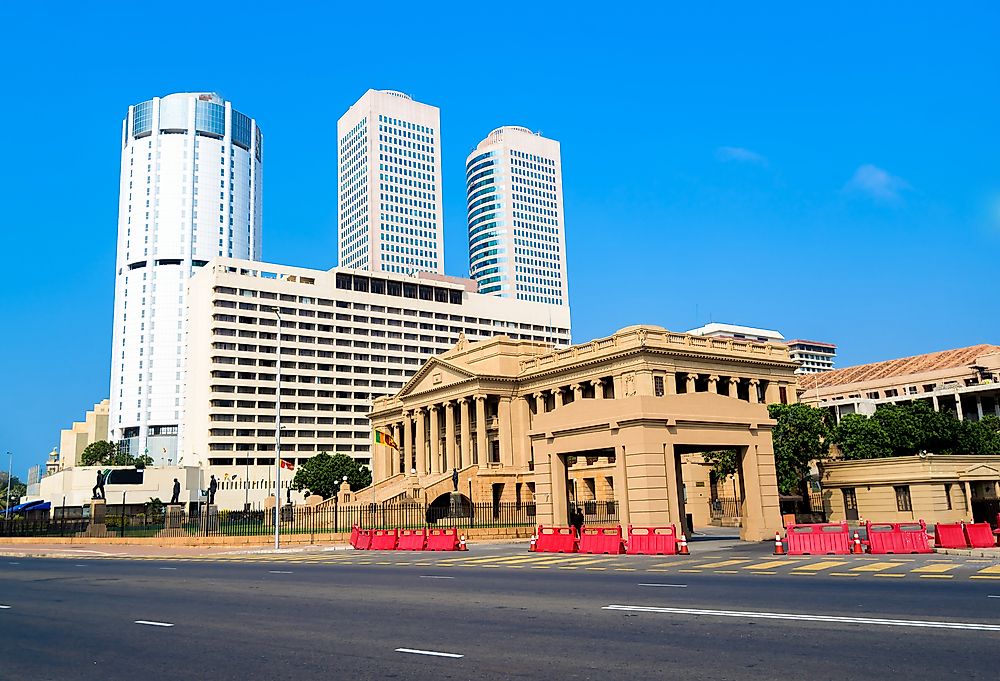Presidents Of Sri Lanka

Sri Lanka, officially known as the Democratic Socialist Republic of Sri Lanka, is a country in South Asia region, to the southeast of India. It is a democratic state with a semi-presidential system of government. Sri Lanka was colonized by the British and gained independence in 1948. However, it remained a dominion of the British Empire, governed by the British Monarch through representation by a Governor-General. In 1972, the position of the Monarch and Governor-General was replaced with the office of the president. A new constitution was promulgated in 1978, strengthening the position of the president. Now the president is the head of state and leader of government elected democratically by a popular vote. The president is the commander-in-chief of the Armed Forces of Sri Lanka and has the authority to call for a state of emergency and appoints or dismiss various state officials.
Presidents Of Sri Lanka
William Gopallawa (1972-1978)
Gopallawa attended St. John College and Dharmaraja College and later St.Anthony’s College. In 1920, Gopallawa enrolled in Cylon Law College in Colombo. In 1924 he became proctor and notary public practitioner. He joined politic in 1939 when he became the municipal commissioner of Kandy. In 1960 he served as the second ambassador to China and the following year he was posted as ambassador to the US where he served until 1962 before being recalled and appointed Governor-General of Ceylon. When the country became a republic in 1972, he became the president. He served until 1978 when he stepped down from office following the 1978 constitutional changes.
Junius Richard Jayewardene (1978-1989)
Julius Richard Jayewardene was born on September 17, 1906, and attended Bisho’s College for primary education and Royal College for secondary education. In 1926 he joined University College in Colombo and finally joined Colombo Law College in 1928. He was the prime minister from 1977 to 1978 and became president in 1978 after he amended the constitution to introduce an executive presidency. During his term as president, he introduced decisive economic reforms, and that helped the country to grow economically. However, his rule saw an increase in ethnic tensions, which resulted in a civil war at the end of his tenure.
Ranasinghe Premadasa (1989-1993)
Ranasinghe Premadasa was born on June 23, 1923, and attended both primary and post primary education in Colombo and attended St.Joseph’s College for secondary education. He later joined the University of London. In 1955 he was elected the deputy mayor of Colombo, and also serverd as the Minister for Broadcasting in the 1960s. He served in different government positions until 1979 when he became the third (and second executive) president of Sri Lanka, who was elected in 1979 after Jayawardene stepped down. He is credited with having implemented development schemes that helped to reduce poverty and improve social conditions in the country. However, he inherited the position at a time when the country was facing a civil war. He was assassinated in 1993 by a suicide bomber from LTTE, one of the movements involved in the civil war against government troops.
Dingiri Banda Wijetunga (1993-1994)
Dingiri Banda Wijetunga was born on February 15, 1916, and joined St. Andrew’s College in Gambola before working as an inspector in a corporate department. He entered parliament for the first time in 1965 when he successfully contested. He lost the same seat on 1977 and claimed it again in 1977 and was appointed a minister of information and broadcasting. He served different ministerial position until 1989 when he was appointed the Prime Minister when Premadasa was assassinated. He was thus appointed as the acting president and was subsequently elected as the president of the republic by parliament in 1993. He served for one and a half years until he was defeated in the 1994 general elections.
Current situation in Sri Lanka
Sri Lanka is a democratic country, but it has been faced with several problems in the past due to a long civil war and a powerful president position that resulted in several allegations of corruption and abuse of office. However, since the incumbent president - Maithripala Sirisena - taking over, the government has made several successful attempts to reform the country, and he seems to be taking it in a positive direction. Maithripala Sirisena is the current President of Sri Lanka who took office in 2015, after defeating Rajapaksa in general elections, when he tried to run for a third term. Sirisena spearheaded a constitution amendment that diluted the numerous powers enjoyed by the president since 1978. He has also helped to restore diplomatic relations with countries such as the US and India.
Presidents Of Sri Lanka
| Presidents of Sri Lanka | Term in Office |
|---|---|
| William Gopallawa | 1972-1978 |
| Junius Richard Jayewardene | 1978-1989 |
| Ranasinghe Premadasa | 1989-1993 |
| Dingiri Banda Wijetunga | 1993-1994 |
| Chandrika Kumaratunga | 1994-2005 |
| Mahinda Rajapaksa | 2005-2015 |
| Maithripala Sirisena (Incumbent) | 2015-Present |











